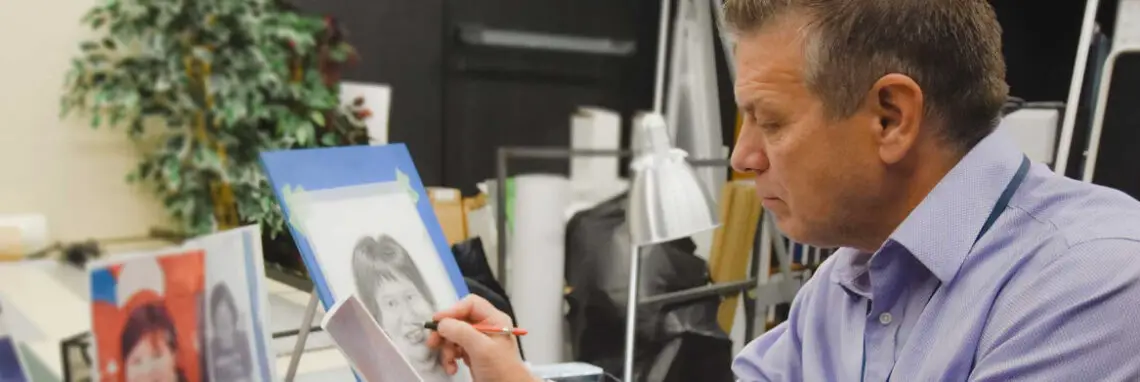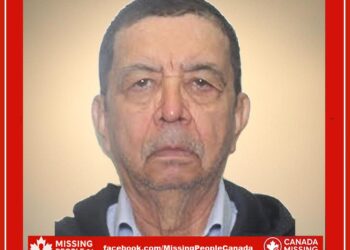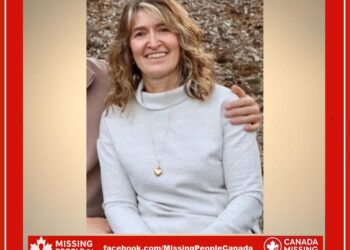Cpl. Jean Nault is an RCMP forensic artist who has spent his career sketching people he doesn’t know but desperately wants to find — police suspects and missing adults and children. People like Desiree Oldwoman, a young Indigenous woman with autism who went missing 10 years ago.
The 21-year-old was last seen near her home on Siksika First Nation, about 100 kilometres southeast of Calgary, Alta, on August 27, 2011.
Hoping to revive the investigation, Nault visited Oldwoman’s family to create an age-progression sketch of what the young woman could look like now.
Before proceeding with any drawing, police carefully consider factors such as the age of the individual and the likelihood that new details will emerge.
“It’s an opportunity for us to breathe new life into the case,” says Nault, a 24-year veteran who works with the RCMP’s Edmonton-based Missing Persons Unit (MPU). “For Desiree, the family wants to know and are desperate to find out what happened to her. These efforts take a lot of work but they’re important. It lets the family and public know we’re still trying.”
The sketch process
Normally, the Operational Command Centre or a lead investigator will contact a forensic artist and ask them to create a composite sketch, or drawing, of the person of interest.
When the person of interest isn’t known to police, forensic artists like Nault will interview witnesses and begin drawing from their descriptions.
Nault asks them questions about what they remember of the person’s facial features, including any scars or birthmarks, and shows them images of various noses, eyes, chins, lips and other features that can help create an accurate sketch.
“Basically I’m holding a pencil and they will tell me what to draw,” says Nault, who has a Bachelor of Fine Arts from the University of Alberta. “The witnesses and I have a back and forth, and they critique what I draw until they can’t recall any more details.”
Gathering details
With age-progression sketches — where the person is known to police — Nault starts with a picture of the subject at the age they were last seen.
He also benefits from seeing photographs of the missing person’s family members, or meeting with them.
“Finding a family member who bears a strong resemblance to the subject would be best,” says Nault. It’s also important to have information on the subject’s health and lifestyle, such as whether they were smokers, worked a lot outdoors, or if they were fit or inactive.
Nault also helps the unit track down information on other missing person’s files. For him, it’s all about capturing the person’s essence.
“To me, that means the look of the person and you usually find that around the eyes,” says Nault. “For those who have gone back to 20- or 30-year high school reunions, it’s when you are looking into someone’s eyes [you] remember who they are.”
Nault was fortunate enough to meet with several of Oldwoman’s family members including a younger sister, who described Oldwoman’s eyes as bright and full of life. “By meeting with Desiree’s sister, it allowed me the opportunity to see how gracefully she aged, and because there was such a strong resemblance, it could be assumed that Desiree would also have this youthful appearance that made her look years younger,” says Nault.
Sparking a memory
But why ask sketch artists to complete age-progression drawings when software exists that can do the same thing? Nault admits he’s contemplated the question before.
“My hesitation in using this software is that the finished product could be too perfect or polished, and appear more like a photograph than a drawing. Viewers may be too quick to dismiss it as somebody they don’t know,” he says. “If that extra second or two that viewers will take to look at a drawing results in them having a spark of recognition, they may contact the police with valuable information.”
In August 2021, Nault’s drawing was used as the centrepiece of an RCMP public awareness campaign about Desiree’s disappearance.
While persons of interest have been found using age-progressions sketches, it is rare. Even so, the sketches are a useful investigative tool, according to Nault, who has completed seven.
“It’s important to revisit these cases because you never know what you’re going to find,” says Sgt. Carolyn Lloy, who’s in charge of Alberta’s Missing Persons Unit where Nault has worked since April 2021.
She says staff at the unit actively review and re-examine historical cases for any new information that could advance those investigations.
“We have some cold cases where people in their 70s went missing 20 years ago, and we have others where the missing were younger and there are more leads,” says Lloy.
For now, RCMP investigators still wait for new leads from Oldwoman’s age-progressed forensic sketch and hope they will get a tip that will crack the case.
https://www.rcmp-grc.gc.ca/en/gazette/sketching-remember-and-find-the-missing?re







